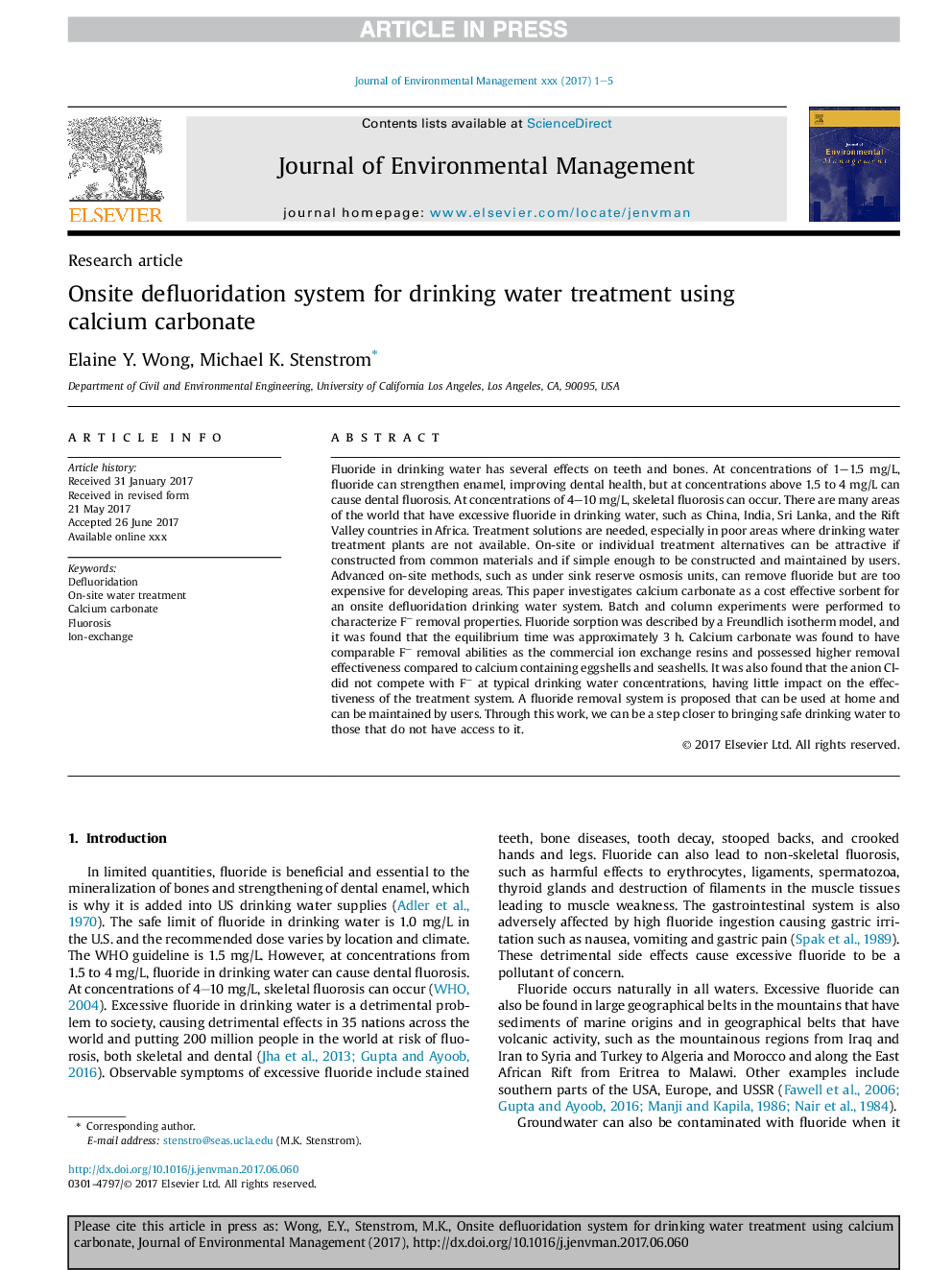| Article ID | Journal | Published Year | Pages | File Type |
|---|---|---|---|---|
| 7477335 | Journal of Environmental Management | 2018 | 5 Pages |
Abstract
Fluoride in drinking water has several effects on teeth and bones. At concentrations of 1-1.5Â mg/L, fluoride can strengthen enamel, improving dental health, but at concentrations above 1.5 to 4Â mg/L can cause dental fluorosis. At concentrations of 4-10Â mg/L, skeletal fluorosis can occur. There are many areas of the world that have excessive fluoride in drinking water, such as China, India, Sri Lanka, and the Rift Valley countries in Africa. Treatment solutions are needed, especially in poor areas where drinking water treatment plants are not available. On-site or individual treatment alternatives can be attractive if constructed from common materials and if simple enough to be constructed and maintained by users. Advanced on-site methods, such as under sink reserve osmosis units, can remove fluoride but are too expensive for developing areas. This paper investigates calcium carbonate as a cost effective sorbent for an onsite defluoridation drinking water system. Batch and column experiments were performed to characterize Fâ removal properties. Fluoride sorption was described by a Freundlich isotherm model, and it was found that the equilibrium time was approximately 3Â h. Calcium carbonate was found to have comparable Fâ removal abilities as the commercial ion exchange resins and possessed higher removal effectiveness compared to calcium containing eggshells and seashells. It was also found that the anion Cl- did not compete with Fâ at typical drinking water concentrations, having little impact on the effectiveness of the treatment system. A fluoride removal system is proposed that can be used at home and can be maintained by users. Through this work, we can be a step closer to bringing safe drinking water to those that do not have access to it.
Related Topics
Physical Sciences and Engineering
Energy
Renewable Energy, Sustainability and the Environment
Authors
Elaine Y. Wong, Michael K. Stenstrom,
